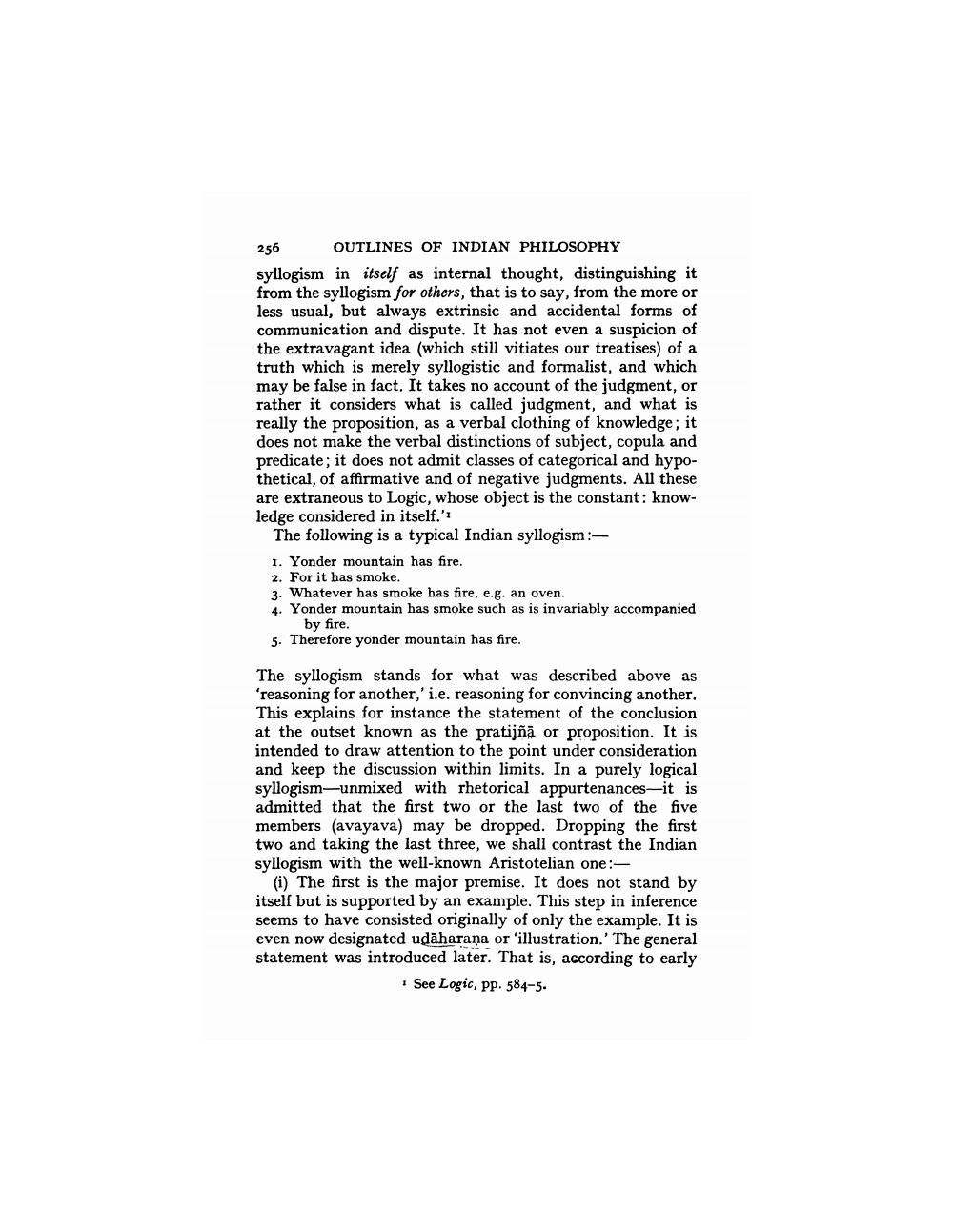________________
256
OUTLINES OF INDIAN PHILOSOPHY syllogism in itself as internal thought, distinguishing it from the syllogism for others, that is to say, from the more or less usual, but always extrinsic and accidental forms of communication and dispute. It has not even a suspicion of the extravagant idea (which still vitiates our treatises) of a truth which is merely syllogistic and formalist, and which may be false in fact. It takes no account of the judgment, or rather it considers what is called judgment, and what is really the proposition, as a verbal clothing of knowledge; it does not make the verbal distinctions of subject, copula and predicate; it does not admit classes of categorical and hypothetical, of affirmative and of negative judgments. All these are extraneous to Logic, whose object is the constant: knowledge considered in itself.':
The following is a typical Indian syllogism: 1. Yonder mountain has fire. 2. For it has smoke. 3. Whatever has smoke has fire, e.g. an oven. 4. Yonder mountain has smoke such as is invariably accompanied
by fire. 5. Therefore yonder mountain has fire.
The syllogism stands for what was described above as 'reasoning for another,' i.e. reasoning for convincing another. This explains for instance the statement of the conclusion at the outset known as the pratijñā or proposition. It is intended to draw attention to the point under consideration and keep the discussion within limits. In a purely logical syllogism-unmixed with rhetorical appurtenances-it is admitted that the first two or the last two of the five members (avayava) may be dropped. Dropping the first two and taking the last three, we shall contrast the Indian syllogism with the well-known Aristotelian one: -
(i) The first is the major premise. It does not stand by itself but is supported by an example. This step in inference seems to have consisted originally of only the example. It is even now designated udāharana or 'illustration. The general statement was introduced later. That is, according to early
See Logic, pp. 584-5.




